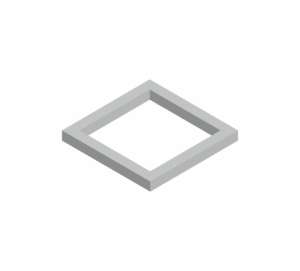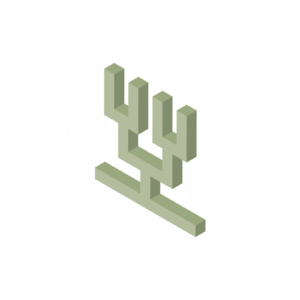TRENDWATCHING
Focus
TRENDWATCHING IN THE WORLD OF DESIGN
Trendwatching can be identified in many ways because, since it is quality research, it can be carried out in every social and cultural sphere. To better understand what trendwatching is, let’s start by defining the concept of trend.
A trend is a variation in habits, in society or simply in aesthetics, over an average timeframe. It is dictated by special characteristics that surface after highly influential events, such as Trade Fairs, International Exhibitions, Fashion Weeks, etc., or by emerging cultures that can establish trends. This has been occurring in the African continent in recent years.
The process that underpins the birth―or return―of a trend starts from the habits and behaviours of people within the society. When a growing number of people adopts an attitude or imitates conventions that surface from a certain trend, these ‘habits’ become increasingly common and are gradually considered normal.
In the design world, this is translated into the birth, change or resurfacing of aesthetics, colours and shapes that, for several reasons (e.g., use by leading brands, designers or architects), dictate the trend and, therefore, influence future market demands.
Hence, the goal of trendwatchers in the design world is to continuously monitor several key factors, not only aesthetic ones, in order to obtain key indications in the overall analysis of each trend.
Explore our blog to find all articles on trendwatching in the world of design!
TREND 2021
How will the way of designing spaces change? Will the house be classic-oriented or pop-oriented in the coming years? Legendary or hyper-tech? Is the trend linked to ecology still an ascending trend or is it becoming a trend now transversal to all aesthetics?
An unpredictable, continuously changing, uncertainty-filled world: this is how the future now looks. Climate change, political and economic upheaval, and a health emergency that is affecting everyone on the planet pose ever-more complex questions about how our lives will change in the short-medium term.
In light of these factors, our trendwatching work has necessarily had to adapt to the quest for paradigms that will suit the needs of a post-Corona world. Our approach embraces what we witnessed at the international design fairs (visited in the first two months of the year) but now necessarily involves attentive analysis of the extraordinary times we are experiencing.
The result? An extensive study, conducted by the Tosilab trendwatching team, involving an analysis of relevant projects on the international scene within the period spanning from the second half of 2019 to late 2021. We’ll sift through new meanings of minimalism to seek out the trends most attuned to high-performance and high-tech environments. We’ll be keeping a close eye on the development of the revival concept and will illustrate spaces that incorporate both design-friendliness and ultra-contemporary pop trends. Together with the projects, we’ll simultaneously be highlighting an anthology of surface aesthetics, topical nuances and brand new combinations of materials.
We are experiencing times of uncertainty and mistrust with increasingly complex lifestyles. Moreover, hyper-connectivity on the Web, an essential part of contemporary daily routine, often alienates people from nature, human relations and the individual quest for spirituality.
Hence, we seek to escape the present in the hope of achieving, by all possible means, a life centred on well-being, the happy haven everybody longs to live in.
But how can we build this haven? There is an underlying mass cultural tendency to look to the past, as opposed to the innovative urge to fully rely on technology for all that concerns the future.
In the first case, looking back is a sort of nostalgic process that refers to the ‘roaring’ post-war period (’50s and ‘60s called the Dolcevita trend), and the revolutionary years from Woodstock to the early ’80s (Wonderland). And if contemporary minimalism, which identifies the current trend to drain and essentialise to the extreme (Color of Silence) cannot be left out of the picture, our vision of the future must take two essential factors into account. Firstly 2030, which is not very far in the “future” after all. It identifies the Eco-Logic trend with the awareness that planetary damage is caused by excessive use of plastics or by CO2 emissions, a concept that has deeply and extensively moved human consciences. Indeed, today people feel it is their duty to (rapidly) seek solutions for this environmental plague. Secondly 2091, the year of the Login trend featuring a longing for the new, with innovation and technical solutions generating new languages, tools, instruments and challenges increasingly conveyed by a disembodied Hi-Tech world.
Hence, these worlds witness the growing importance of the words nostalgia, awareness, sustainability and technology, which guide mankind in the search for well-being, a haven to overcome the current age of uncertainty.
We look to the past with nostalgia, and the Dolcevita flavour of the ‘50s evokes memories of a period of well-being. Those dynamic years followed the distress and straits of World War 2. They were years that marked a powerful economic boom ruled by a zest for life and a pleasure-seeking atmosphere.
Aesthetics were impetuous, materials were only of the highest standards and colours were rich. The lavish modernist style recalls past atmospheres. This world merged genuine and luxurious materials to create dramatic and intimate settings with a wealth of details, often presenting elements that can be traced to classicism.
The need for a light-hearted positive approach found solutions in the world of Wonderland, a colourful and all-encompassing abstract universe. Playing helps to find a meaning amidst the chaos and difficulties of daily life; it leads to a parallel universe where everything can be traced to games. This approach is inspired by the light-heartedness of the ’70s, the revolutionary years of change (consider Woodstock – 1969 – that deeply transformed the culture and iconography of live music, or the moon landing that same year), and of the ’80s, the age of the first PCs and video games (Pac Man, Tetris and SuperMario Bros were launched in the early half of the decade).
In the world of aesthetics, design is a playful inventor, shapes are roundish, and colours – all primary – enhance spaces with a touch of humour and an almost surreal effect.
Fill the void: this trend is best explained with this oxymoronic phrase. The present is characterised by the urge to create empty and basic urban oases that offer relaxation and a break from daily routine. It is the world of living with essentials, of reuniting with self, of spiritual comfort and of functional traits prevailing on aesthetics. This is implemented with aesthetics featuring minimalist colours, the absence of decorations and carefully chosen formal details. Van Der Rohe’s vision perfectly fits into this setting: Less is More.
The media daily alert us that we have little time to save the world from global heating. The possible resulting damages call to mind disquieting scenarios that are not very reassuring about the future. Activism has gained strength in recent years (consider Greta Thunberg). Several famous figures often take the field to build awareness on the theme. Even companies, from emerging ones to large multinationals, are increasing their commitment to reduce wastage or reutilise resources.
The design scene presents several virtuous cases of environmentally sustainable initiatives. It is interesting to notice that, while aesthetics inspired by this world of natural fibres, recycled plastics and reutilised plant and animal discarded items lack perfection, they have a fascinating charm based on their history. Colours and motifs inspired by nature celebrate the imperfection of Eco-Logic.
The technological scene is steadily evolving, yearly providing innovative and constantly perfected, hyper-connected, digital tools and services. The race for 5G (5th generation mobile connectivity), e-sports, augmented reality, voice assistants, space tourism and big data are only some of the Hi-Tech themes that are ready to dictate the future trends.
In the aesthetic scene, the Login trend is translated into universes in which the confines between reality and imagination are very few or none at all. Colours are translucent, shapes are evanescent and undefined, and environments are synthetic. A virtual reality
Travelling from Paris to Eindhoven, London and Atlanta, Frankfurt and São Paulo and many other places around the world, our research, which commenced late in 2017 and was completed in the early half of 2018, has led us to analyse and group into four macro categories a series of common trends we have observed in more than one aesthetic context. We have called them Colourful, Essential, Humanification and A.I.fication. Numberless micro trends, which are useful to identify trends with a less defined character, are located in the midst of this type and conceptual differentiation. Moreover, today society is characterised by multicultural features that generate continuous contaminations. This is why exclusion is a complex process, while inclusion is increasingly useful.
We’re at a time in history when the phenomenon of urbanisation is growing fast. The side effects of this movement of the population towards urban areas include, on the one hand, a reduction of space and, on the other, lifestyles being adapted to increasingly small dwellings.
In response to this, the trend is to reduce spaces to the essence, avoiding unnecessary decoration and using extremely functional products. The result? A simple and elegant design with minimal and long-lasting solutions suited to any time of year.
Soft and relaxing colours that recall natural elements. The Humanification trend’s colour palette is made up of a selection of 8 colours that don’t just include classic greens but also interesting shades that connect perfectly with nature.

Whilst people are on a continuous pursuit of all things natural, it is equally true that the constant development of the new technologies is transforming every kind of activity.
From communication, with an ever wider use of the social networks, to industry 4.0, and including the cars of the future that are able to drive completely autonomously: the trend of the future is A.I.fication.

Unplugging from the daily routine, seeking a haven away from industrial and chaotic environments, creating an authentic urban oasis that’s user-friendly and personal: this is the trend of humanification, where everything is centred on the person and where everything works towards a detachment from a lifestyle that’s ever more digital and decidedly urban.
In the field of interior design, this trend takes us back to nature, which mankind has always been connected to. Green dominates together, inevitably, with all the colours that are most closely linked to nature; the aim is to enhance those environments that can nurture thought and instill the body with energy.

An explosion of colour, modulated and reinterpreted using different materials which, mixed together, recreate graphics, geometric patterns, 3D elements and optical illusions to enrich the surfaces and spaces around us.
Fuelled by the vibrancy of the culture of Africa, a fast developing continent from many points of view, the Colorful trend is based on the use and combination of bright and gaudy colours, which bring furnishings and surfaces to life.






